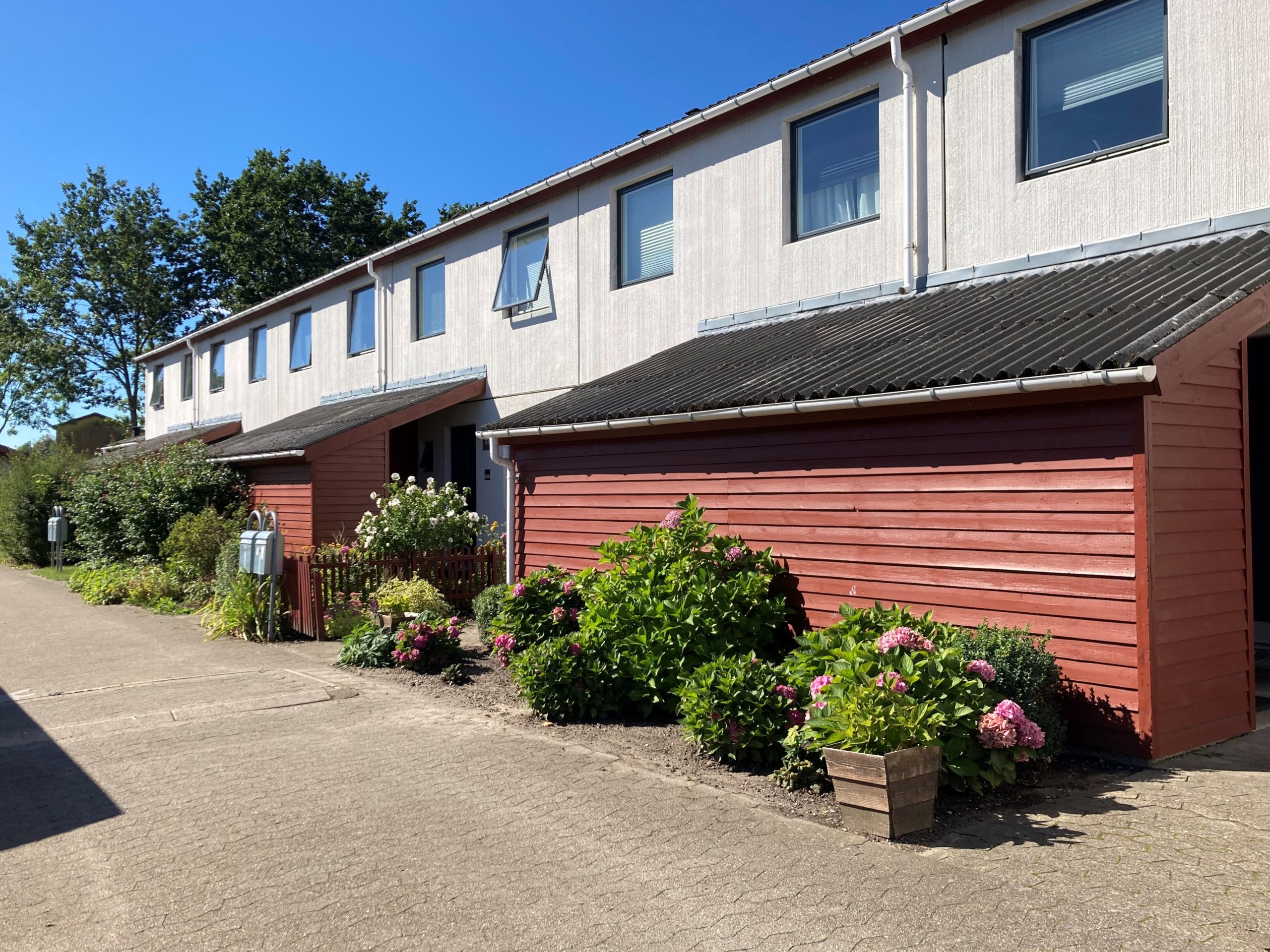note* This article is based on a Japanese article which was made on 9th October 2020.
Before I came to Denmark, there was a study that blew me away.
It was the research by Jan Gehl and a research group at the University of Melbourne. They found that when there is a semi-private front yard, people take more social activities on the streets (Gehl & Svarre, 2016). Before I got to know the research, I always associated social space which can activate communities with ‘public space’, such as a plaza and street. So, I was so surprised to learn that small gardens inside a ‘private property’ can have an impact on the local community.
After coming to Denmark, I put the research into practice, and I considered ‘what exactly is good about front yards’ and the ‘potential of front yards to promote the physical and mental health of local residents’. Then, I wrote this article.
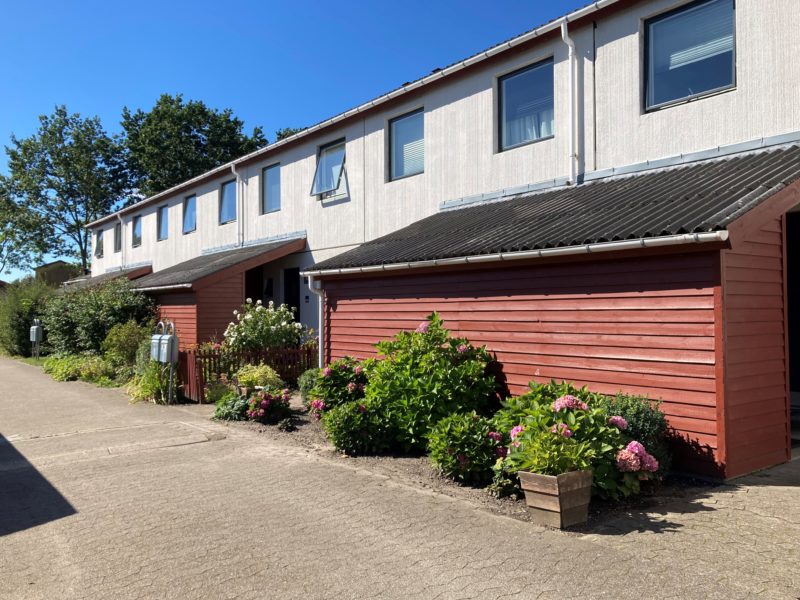
- Overview of Jan Gehl’s research – The social role of a front yard
- The results of execution in a low-rise terrace house – a small garden with two potted plants
- Discussion of the experiment – A discussion of each element of the front yard
- Further possibilities of front yards – Promoting mental and physical health
- Summary
Overview of Jan Gehl’s research – The social role of a front yard
First of all, I will give a brief overview of the research (Gehl & Svarre, 2016).
Source: Jan Gehl et al. The interface Between Public and Private Territories in Residential Area, 1977
Location: 17 streets both in the old and new urban areas, Melbourne, Australia.
Purpose: Clarify the relationship between the physical conditions (design of street, front yards, and building facades, etc.) and the behaviours in a street.
Method: Behavior map (a map indicating where and what people were doing) and daily observation
Period: April to May, 1976
Result: Social behaviours (eating, enjoying recreation, etc.) were more prevalent in residential streets with low-fenced front yards than in residential streets with lawns (no semi-private space)
Similar studies followed the research. In Waterloo and Kitchener, Canada, 1977, showed that 89% of street activity takes place close to semi-private boundaries. Additionally, in 1982, in Copenhagen, Denmark, it was confirmed that the activity level in residential streets with “soft edges”, such as front yards, was 2-3 times higher than streets with “hard edges” which didn’t have front yards. This shows that semi-private space such as front yards plays a crucial role in street activities. (Gehl, 2016)
The research in Melbourne made an impact on society, requiring stricter building regulations to ensure that front yards are not enclosed by walls or fences making isolated spaces. Additionally, it changed public housing regulations to make it easier to build low-rise housing with front yards instead of large, concentrated, high-rise, and mix-used buildings. (Gehl & Suvaa, 2016)
The results of execution in a low-rise terrace house – a small garden with two potted plants
Now I live in a low-rise terrace house, which is similar to one in the previous research in Melbourne. Each household has a semi-private front yard at the entrance, and the main activities there are taking a break and sunbathing, etc., which is also similar to the survey in Melbourne.
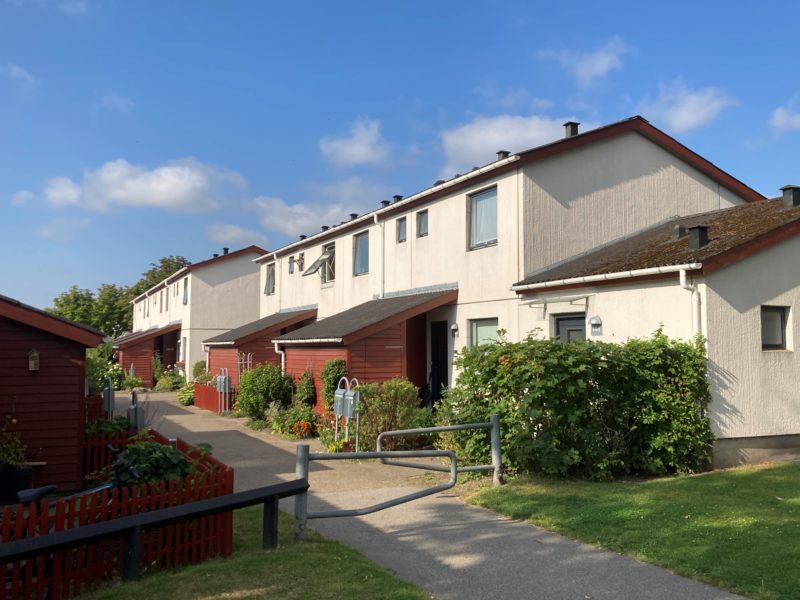
Since I didn’t have any knowledge of gardening, I started gardening by placing two small flower pots at the entrance.
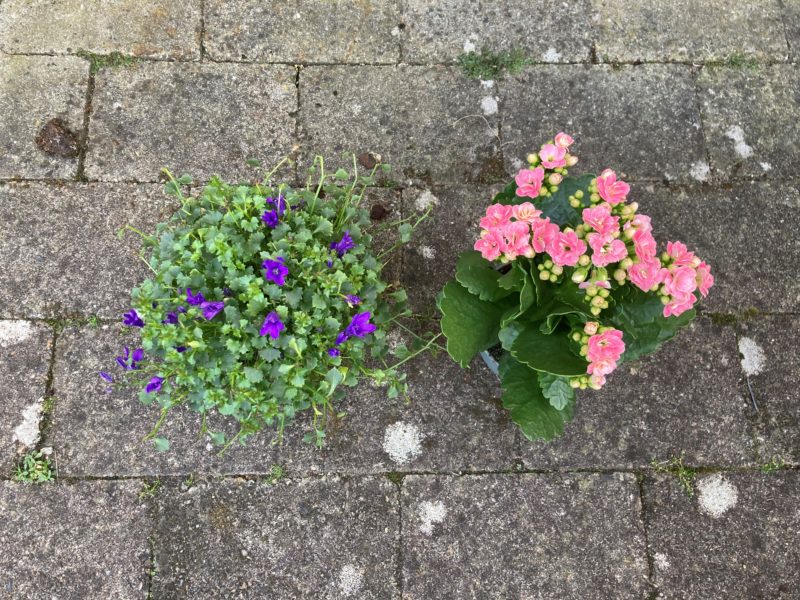
To be honest, I wondered if such a small action would make any impact. However, I saw a difference immediately – it was the next day! One of my neighbours, whom I had only greeted since I had moved there one week ago, saw the flowers and said, “Is it your flowers? Cute!”
After that, our conversation naturally developed based on the flowers, and I was able to briefly introduce myself (that I had recently moved to Denmark from Japan, was new to gardening, and would start studying at a nearby university next month, etc.). She also taught me her background (how long she had lived here and how she improved and took care of her garden).
After the conversation, I felt much closer to her. Then, I become able to ask her small questions to live here. Thankfully, she invited me to a new year’s eve party, because she was concerned that I would be lonely, and when I had a weird problem, she helped me a lot!
This made me feel that I had better communication with my neighbour than I had in a typical Japanese apartment. Even after I moved to another city, I still keep the contact with her.
Discussion of the experiment – A discussion of each element of the front yard
Based on these experiences and previous studies, I considered street and yard components which contribute to the local community.
1. Soft edges
In the previous research, it emphasized the importance of soft edges, such as low fences. This is because the visual connection between public and private spaces greatly affects street activity. (Gehl & Suvaa, 2016) (Gehl, 2016) Actually, I naturally felt a sense of closeness to my neighbours because I can often see them relaxed and enjoying their lives in my daily life. Perhaps due to the difference in the city scale, there were some differences in front yards between Melbourne and Aalborg. First of all, in Aalborg, there are not so many fences, and most of them roughly indicate boundaries between houses using greenery and erected mailboxes. Even when fenced, they are lower than those in the previous survey: chest-high in Melbourne, and waist-high in Aalborg. And the height allows passengers to clearly see residents sitting in a chair in the front yard.
2. The front yard, which is one step higher than the street
Although this depends on the residential area, in some areas, front yards are one step higher than a street. In Aalborg, most front yards have garden chairs and tables. You will often see people relaxed when you take a walk. Then I felt that it is easier to greet people in the higher front yard because there was less difference in eye height and I didn’t feel like I looked down on them. (From a barrier-free perspective, additional attention to elevation will be required, though.)
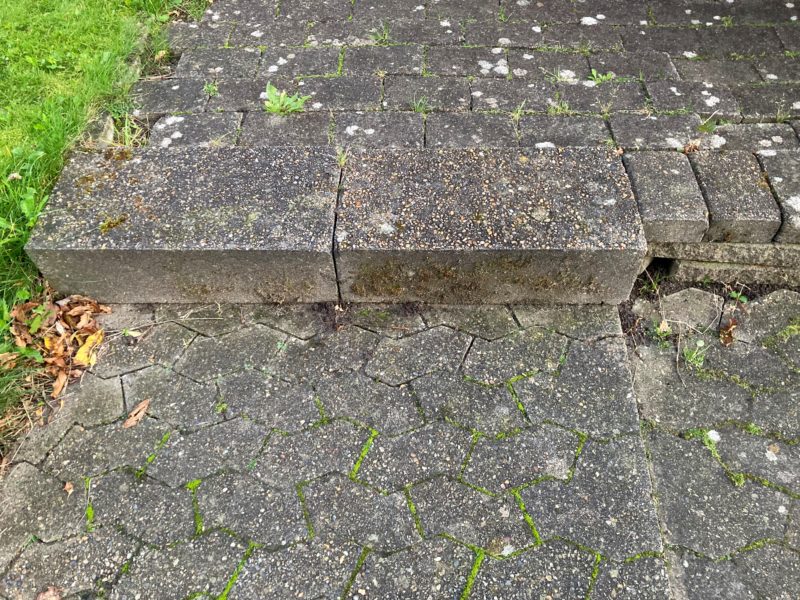
3. Pedestrian-prioritised street
Jan Gehl said that even if there were front yards or outdoor terraces, when the streets were occupied by cars, it was hard to find people relaxing in front of their houses (Gehl, 2016). From this perspective, I found that the streets around my terrace house put priority on pedestrians. Firstly, there are bollards at most of the boundaries of a residential area to restrict car entry. In addition, parking lots are not located in front of each house. They are assembled together adjacent to the residential area so that parking lots and garages do not interrupt the continuity between the street and the front yard. Finally, the streets have humps, the projection to slow down not cars as well as bicycles. (In the photo, there are no humps on the left side of the street, but at some places humps cross a street.)
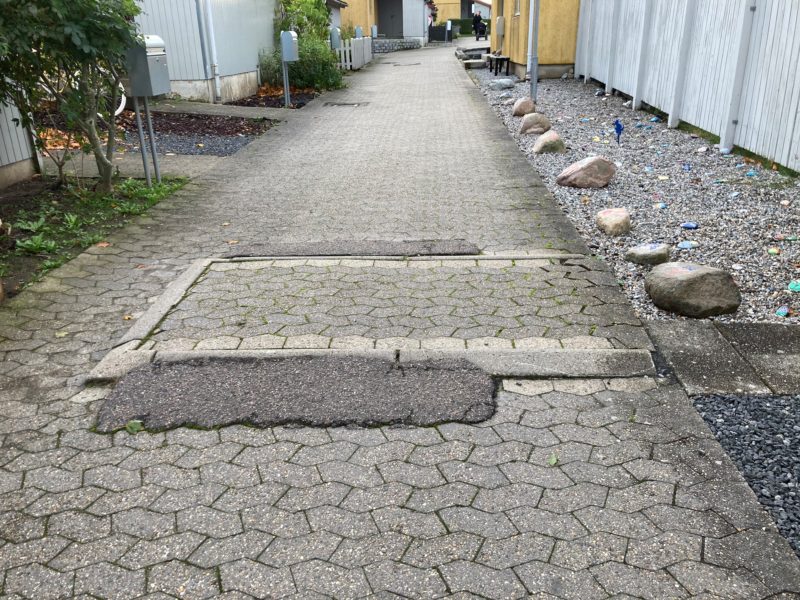
As well as Copenhagen, travelling by bike is common in Aalborg, especially around the city centre. However, living in regional cities often required long-distance travel. Therefore, a car is also one of the most important transportation, and these implementations would make a difference in street activity.
4. Flowers
From the previous experiment, I felt that flowers play a significant role in a front yard. Firstly, flowers can be a common topic for people and help them to develop their conversation, even if they don’t know each other well. In Aalborg (same in other cities in Denmark), gardening is so popular that most supermarkets sell flowers and soil at their entrances. Additionally, often flowers are selected for some reason. Therefore, flowers can be a low-risk topic for conversation, like a topic for weather, but also give people a chance to know each other.
Secondly, you will have more opportunities to go out to water plants in your front yards. Although watering only takes a small amount of time, I need to mention that ‘many short events are definitely necessary for larger and longer events’ (Gehl, 2016).
Lastly, flowers can attract the passengers’ attention. There stems from a psychological colour effect to attract human eyes. In general, warm colours attract more human attention than cold colours, and vivid colours more stand out than calm colours (Tokyo Chamber of Commerce and Industry, 2012). Flower colours such as pink and yellow can attract more attention than colours of the surrounding greenery and exterior wall. Gehl said plenty of things to see and touch, slow down and sometimes make you want to stop is important for soft edges (Gale, 2016). Although this phrase was used for soft edges in commercial areas, I suppose we can also apply this idea to residential areas.
Thinking back, I have felt before that flowers can be a good conversation starter. Once I went to Kusunoki Square in front of the previous Yokohama City Hall, in Kanagawa, Japan. This square was built in the 1970s and is a pioneer of pedestrian-prioritised streets in Japan. When I observed, many people slowed down their walking speed as soon as they entered the square, slowly looking at the flower beds, or walking to the flower beds and starting new conversations while touching the flowers. Of course, this is because the square itself was designed well to make people feel comfortable, but I was very impressed to see many people change their activities because of flowers even in just 30-40 minutes of observation.
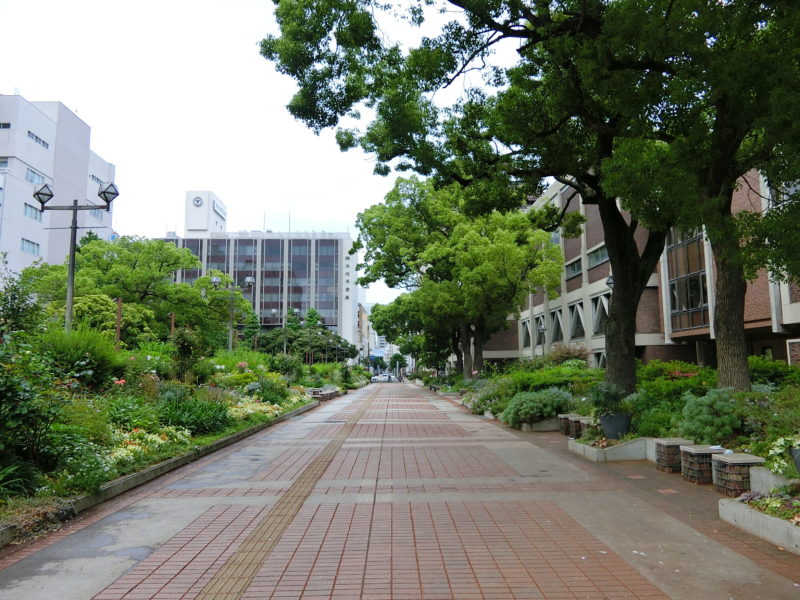
Further possibilities of front yards – Promoting mental and physical health
In a study conducted in the Netherlands (Jolanda et al. 2009), it was found that the more green spaces within a 1km radius around people’s houses, the better their mental and physical health got. (Surprisingly, there was no correlation between green space within a 3 km radius around their home and their health (both mentally and physically).
The study also found that the more greenery there was, the less lonely people felt, regardless of the number of social contacts they actually had. The effect was particularly strong among urban dwellers, people over 65, and young people aged 12-25 (Note 1). The research suggested the reason for the bias in age groups, indicating the fact that they didn’t have much means to get far on their own. However, during the Coved-19 pandemic, most people spend more time at their home. So, I suppose the differences in age groups would be less under the situation. In May 2020, I heard on the news that gardening was very popular during the self-restraint period in Japan. I suppose this was because people treated their loneliness with greenery unconsciously.
From these things, I came to think utilising the greenery of the most familiar place (the front yard) would allow residents to promote their physical and mental health. (Note 2)
Summary
Although the Dutch research focused on the area of greenery, it also mentioned that the quality of greenery would have a significant impact on people’s perceptions.
Once I recognised a yard or garden as a private space. However, as I saw more and more people interacting with each other over the edge of their front yards, I began to think that if there are more front yards that people can easily access, it will result in increasing green areas ‘in their minds’.
Making parks and plazas require an amount of money and space, but if front yards are utilised more, people will achieve the desired results with little effort. As Jan Gehl notes, one square meter in front of a house was more frequently used than ten square meters across the street (Gehl, 2016). We should not only require a big park and excellent public space but also enriched greenery in the most familiar place (front yards) as attractive soft edges.
A Dutch study also reported that the more greenery there was within a 1 km radius around people’s homes, the less likely people felt a “shortage of social support” (Jolanda et al. 2009). (Same as the loneliness study, the relation was apparent for residents in an urban area, younger people aged 12-25, and those aged 65 and older. Therefore, I considered cities which hope to provide more social support to the elderly but don’t have enough workers or budget can make the best effort to encourage more greenery in front yards.
Thank you very much for your reading.
Annotation
Note 1: Because the Dutch survey covered a wide area, it only counted greenery with an area of 25 square meters or more and did not take into account small greenery such as trees and flowers in gardens and streets. However, the earlier Chicago survey (Coley et al. 1997) focused on small greenery such as street trees, and the Dutch survey described the fact that they did not take into account small green spaces in the living environment as a limitation of the survey.
Note 2: Because the health survey was conducted by face-to-face interviews, people under the age of 11 were not selected as subjects in the survey. In addition to age group and region, differences in income and education were also examined (In both groups, the lower are more susceptible to the greenery effect).
References
Coley, Rebekah Levine, William C Sullivan, and Frances E Kuo (1997). “Where Does Community Grow?: The Social Context Created by Nature in Urban Public Housing.” Environment and Behavior 29.4 : 468–494. [online]. Available at: https://kbdk-aub.primo.exlibrisgroup.com/permalink/45KBDK_AUB/159qapk/cdi_gale_infotracacademiconefile_A19656736 (Accessed: 08 October 2020)
Jolanda Maas, Sonja M.E. van Dillen, Robert A. Verheij, Peter P. Groenewegen (2009). “Social contacts as a possible mechanism behind the relation between green space and health” Health &Place :15 : 586-595. [omline]. Available at: https://kbdk-aub.primo.exlibrisgroup.com/permalink/45KBDK_AUB/159qapk/cdi_gale_infotracacademiconefile_A191400762 (Accessed: 27 September 2020)
東京商工会議所(編)『カラーコーディネーター検定試験 2級公式テキスト(第3版)カラーコーディネーション』(2012)東京商工会議所検定センター,p.9,220,221
ヤン・ゲール&ビアギッテ・スヴァア 鈴木俊治・高松誠治・武田重昭・中島直人(訳)『パブリックライフ学入門』(2016)壮光舎印刷,p.108-109
ヤン・ゲール 北原理雄(訳)『人間の街 公共空間のデザイン』(2016)鹿島出版会,p.87-96

